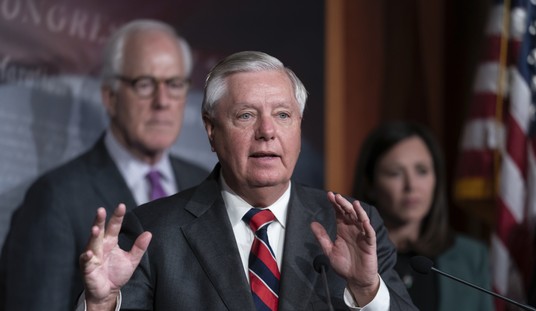I hate to say, “I told you so.”
Well, that’s not really true. I love saying, “I told you so.” But in this case I hate that a headline I wrote more than a year ago is still (mostly) correct.
One of the first pieces I wrote for RedState was titled “California Dems Got a Supermajority, and All I Got Was This Lousy Bullet Train.”
I haven’t received the promised bullet train yet, but they assure me they’re trying! (And in liberal land, that’s all that matters.) I have received a higher gas tax and higher registration fees for my car, but the roads are still filled with potholes. And soon I’ll receive higher energy prices because of the carbon bribe law passed with the help of a few idiot Republicans this past summer. But I digress.
In another early post for RedState, I warned the Dem supermajority that if they tried to secede from the United States (as they were threatening pre-Trump inauguration), that it would not go well for them because of their economic policies. They scoffed.
But this week, in an op-ed in the Los Angeles Times, Kerry Jackson of the Pacific Research Institute asks a great question. If liberal policies are the key to eliminating poverty, why is the liberal paradise of California “the poverty capital of America”?
Jackson highlighted four liberal policies that are destroying California’s middle class and creating a state with only two classes – the super rich and the poverty stricken.
1. No-Strings-Attached Welfare. When many other states and the federal government created work requirements for welfare recipients and succeeded in reducing their welfare rolls, California #resisted. In addition, a huge amount of cash is going to poor immigrant families.
“California recipients of state aid receive a disproportionately large share of it in no-strings-attached cash disbursements. It’s as though welfare reform passed California by, leaving a dependency trap in place. Immigrants are falling into it: 55% of immigrant families in the state get some kind of means-tested benefits, compared with just 30% of natives.”
Why didn’t California follow successful welfare reform models? Easy. There are close to a million full-time-equivalent state and local employees in California who don’t want to lose their jobs. They’d rather not help families out of poverty.
2. Land-use Regulations. Since so many other natural laws (like winter) don’t apply to much of California, its rulers seem to think economic principles of supply and demand don’t apply to housing here either. Um, wrong.
“Counties and local governments have imposed restrictive land-use regulations that drove up the price of land and dwellings,” explains analyst Wendell Cox. “Middle-income households have been forced to accept lower standards of living while the less fortunate have been driven into poverty by the high cost of housing.”
California Environmental Quality Act (CEQA) regulations are so overbearing that they can add $1 million to the cost of a housing development, Jackson writes. While liberals seem to think that big scary corporations should eat that cost and not pass it down to the customer, that’s not how the real world works. With housing costs soaring, middle class families are forced to either share a home with extended family members or move further away from the cities, which drives up the cost of commuting and increases the state’s already legendary traffic problems.
3. Energy Regulation. “California blend” gasoline in the winter, carbon taxes, etc., combine to create a huge burden on burden the middle and lower class.
“By some estimates, California energy costs are as much as 50% higher than the national average. Jonathan A. Lesser of Continental Economics, author of a 2015 Manhattan Institute study, “Less Carbon, Higher Prices,” found that “in 2012, nearly 1 million California households faced … energy expenditures exceeding 10% of household income. In certain California counties, the rate of energy poverty was as high as 15% of all households.” A Pacific Research Institute study by Wayne Winegarden found that the rate could exceed 17% of median income in some areas.”
4. Minimum Wage Hikes. The minimum wage in California is set to increase to $15 from $10 by 2022. The implications of these government-mandated wage hikes (even in some California cities) are already known, but, again, California’s rulers seem to think natural laws don’t apply to them.
“A Harvard University study found evidence that ‘higher minimum wages increase overall exit rates for restaurants’ in the Bay Area, where more than a dozen cities and counties, including San Francisco, have changed their minimum-wage ordinances in the last five years. ‘Estimates suggest that a one-dollar increase in the minimum wage leads to a 14% increase in the likelihood of exit for a 3.5-star restaurant.'”
In addition, Jackson notes:
A higher minimum wage will do nothing for the 60% of Californians who live in poverty and don’t have jobs.
But since the welfare administrators don’t want them to find jobs, it’s all cool. Besides, we’ll have the bullet train.















Join the conversation as a VIP Member